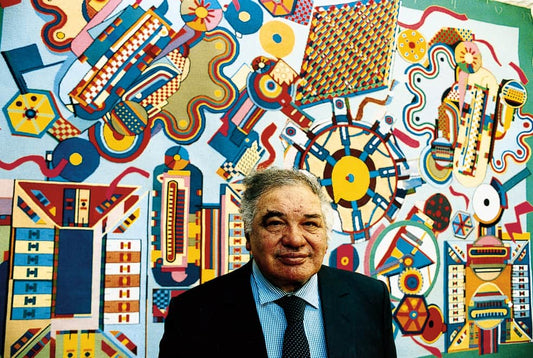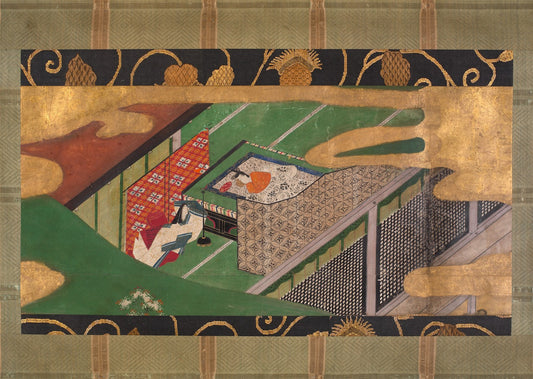Body Fluids in Art: HIV/AIDS and Blood in Art
The AIDS epidemic was a time fraught with fear, discrimination, and death. The first documented case of AIDS in the United States occurred in 1981. Thousands were dying, but it wasn’t until 1996, 15 years later, that an effective treatment called HAART was discovered. The main reason for this delay in treatment was systemic homophobia; AIDS did not get the attention or funding that it should have. By the end of 2006, more than 25 million people had died of AIDS worldwide. During a time of significant loss and pain among LGBTQ people, many artists turned to the creative world as a way to express their sorrow and anger. They helped bring awareness to AIDS and the discrimination that was occurring. Although there are effective treatments and preventative care that have made living with HIV/AIDS possible today, stigmas and discrimination continue to persist. From the 80s to the present day, artists have used their art as a way to share their experiences and expose discrimination surrounding HIV/AIDS.
Ron Athey, Four Scenes in a Harsh Life (1994)
Ron Athey’s Four Scenes in a Harsh Life is a 50-minute performance piece that is ritualistic and masochistic. In the work, Athey explores sexuality, affirms the gay male body, and confronts religious iconography through a queer lens. The work sparked outrage, particularly from religious conservatives, and led to a considerable debate about art and censorship. This debate made it to Congress, where Republican Senator Jesse Helms called Athey’s work “depraved” and was upset that the work had been subsidized by the National Endowment of the Arts (NEA). As a result, the NEA had their budget slashed.
Many viewers clung to a specific part of the performance where Athey, who was open about his HIV-positive status, cut patterns into the skin of another performer (who was HIV-negative), then blotted the cuts with a paper towel and clipped them to a clothesline that was sent over the audience. Athey was wrongly accused by the Minneapolis Star and other media outlets of exposing the audience to AIDS, even though it was not Athey’s blood being blotted on the towel.
Barton Benes, Lethal Weapons (1992-97)


Lethal Weapons consists of 30 objects that contain the artist’s HIV-positive blood. The objects include a vintage atomizer perfume bottle, a water gun, and even a children’s airplane with the cockpit replaced by a syringe. The items were placed in a thick frame encased with chicken wire when put on display. The works juxtapose the fun, light-hearted children's toys with medical equipment and blood. Lethal Weapons also exposed the misplaced hysteria around HIV-positive blood. The exhibit traveled to many museums, where it was widely accepted without much controversy until it arrived in Lund, Sweden. Authorities in Lund refused to let the exhibit be displayed to the public until Benes agreed to heat the items to 160 degrees Fahrenheit in a hospital oven.
Robert Sherer, Blood Works (1997-present)
Blood Works is an ongoing series of paintings created by Robert Sherer, using the blood of one of his friends. The works are mainly botanical in subject matter, illustrating flowers, thorns, birds, and bees. While Sherer was HIV negative, his friend, who wished to remain anonymous, was HIV positive. Often, Sherer combined the two types of blood in his paintings. These works explore the complexities that arise in romantic and sexual relationships in a world with HIV/AIDS. Sherer spent weeks experimenting with the blood to keep it from congealing and from drying to an undesirable shade of brown. Sherer found that if he combined the blood in a thinning solution, it helped the blood move more smoothly across the page. He also discovered a mixture of sealers and varnishes to help retain the red color of the blood.
Jordan Eagles, Blood Mirror (2014-2016)

Jordan Eagles created Blood Mirror from 59 blood donations from gay, bisexual, and transgender men. The blood was combined and put into a large resin case. The case and deep blood-red color revealed the viewer’s reflection, who, while staring into their own life-filled face, must reflect on all the blood that could have been used to save lives. The work was created in response to the discriminatory blood ban instituted by the US government and the FDA during the AIDS crisis. In 1983, the FDA announced a lifetime ban on blood donations from gay and bisexual men. It wasn’t until 2015 that the policy was updated to accept these donations, but only if these men were celibate for a year. There was no celibacy requirement for heterosexual individuals even though they were at risk of contracting HIV as well. The UCLA Williams Institute performed a study in 2014 that found that millions of lives could be saved annually if the ban was lifted completely. The policy was reevaluated in 2020, and the celibacy requirement was updated from a year to 3 months. In 2023, this criteria was at last removed entirely in favor of individual donor assessments for all donors regardless of sexual orientation.
Carlos Martiel, High Risk (2019), Pink Death (2021), Velo De Silence (2022)
Carlos Martiel has performed three works that have engaged with HIV. The first of these was High Risk. Performed in 2019, this work explores the way the pharmaceutical industry controls society. High Risk arose from the artist's own experience with his PrEP treatment and what it means for him and his friends to live in a world with no cure for HIV. The work itself consists of the artist standing nude, surrounded by eight threads that have been stained with blood from an HIV-negative person on PrEP treatment. In 2021, Martiel performed his next HIV-influenced work, Pink Death. The title of this work is a reference to the tiny pink inverted triangle that homosexual, bisexual, and transgender men had to wear during the regime of Nazi Germany. During the AIDS pandemic, the triangle was reappropriated and used as a symbol of resistance. For this work, the artist stood nude against a wall while a thread, dyed with the blood of a friend with HIV, formed an inverted triangle holding the artist to the wall. The performance also sought inspiration from the vulnerability of BIPOC communities, which often suffer at higher rates due to a lack of access to healthcare resources. The third work Martiel performed on this subject occurred in 2022 and was titled Velo De Silence. In this piece, Martiel reflected on the stigma faced by HIV-positive people. For the work, he lay on the floor while holding a square glass pane covering his body. As he lay, the blood from an HIV-positive man dropped onto the surface of the glass.
These are significant works and ones that should be remembered and discussed alongside those of John Boskovich, Felix Gonzales-Torres, and Keith Haring. So many lives were cut short and lost due to an ineffective and homophobic governmental response. These artists and their works help give voice to those lost during the AIDS epidemic while also emphasizing that the fight is not over until there is a cure.
©ArtRKL™️ LLC 2021-2024. All rights reserved. This material may not be published, broadcast, rewritten or redistributed. ArtRKL™️ and its underscore design indicate trademarks of ArtRKL™️ LLC and its subsidiaries.








